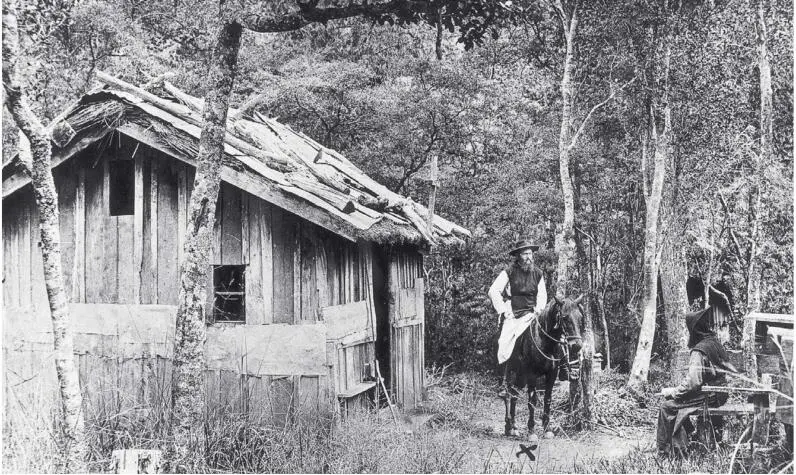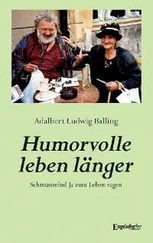1 ...8 9 10 12 13 14 ...23 Finally, on 17 July (1868), Fr. Francis was summoned to the cardinal. The case had been adjudicated in their favour and they were free to continue with the foundation. He handed him a decree of authorization, this time issued by the competent Vatican office, and wished him well. The three Trappists were overjoyed and intoned the Te Deum! After slaving away for nearly eight months at Tre Fontane they could not wait to leave. They had drained the swampy ground and started to plant eucalyptus trees to suck up the stagnant water. The favour they thus did future generations was not forgotten. The monastery of Franciscan Conventual Friars Minor across the road from Tre Fontane installed a plaque in their grounds to the memory of “Francis Pfanner, Trappist”.
The three monks celebrated their last Mass in the ancient ruins and then called on Procurator Francis Regis. After all, this good man – “one of the kindest I have ever met” – had been instrumental in making their sojourn in Rome both possible and profitable.
Before they left the City for good, Fr. Francis submitted their plans to the Holy Father: they would continue to look for an estate, large enough to build a monastery for approx. two hundred monks! That number, he stated, was not unrealistic for they were already receiving applications from Bavaria, Prussia, Baden, Hungary, Croatia and other parts of Europe. Therefore they would begin to admit candidates as soon as they were settled. They had collected enough money and the cardinal of Agram had graciously bid them welcome.
They embarked at Trieste and returned to Agram where they were welcomed again by the Mercy Sisters. However, things did not turn out as they had hoped. National sentiment in the Austrian Crown land was even less favourable to a religious foundation than before. Its citizens were clamouring for independence and foreigners, especially Austrians, were hated. Accordingly, the parliament, newly constituted in May 1868, turned their application down in its first session. It was a hard blow and one that made them ask what the future had in store for them. Closing the door on them in Croatia, would God open another? Certain signs pointed in the direction of Bosnia.
V.
The Cross and the Crescent
The Beginnings of Mariastern in Turkish Bosnia
By the summer of the following year, 1868, the small band of Trappists at Agram was tired of living like restless wanderers. Fr. Francis made a last and desperate attempt to gain a foothold and the much desired stability near Banjaluka (Luke’s Bath) in Bosnia. There was reason to hope for success though negotiations were tedious and he needed all the diplomacy and caution he could muster.
Abbot Francis:
“In order not to draw undue attention from Turkish officials I covered my habit with a trench coat which reached down to my ankles … There was not a single hotel available in Banjaluka. The only room I could find was one which an old German Jew put at my disposal. I was eager to accept but the ceiling leaked so much that without an umbrella I would have got soaked. In the end, I had to avail myself of the hospitality of the Austrian vice consul.”
Endless maneuvers and the mediation of kind people, among them the Croatian consul, a Greek businessman and an interpreter, enabled the would-be founder on 10 June 1869 to sign a contract of purchase for property outside town at 1,400 ducats. He could pay, thanks to Br. Zacharias’ successful promotion and learned to find his way in a country under Turkish rule.
Abbot Francis:
“The government did not employ surveyors; instead, natural landmarks such as brooks, ditches, rivers, dirt roads, peculiar trees and huge stones served as boundaries. Our property was about 700 to 800 ac (48 40 sq. yd.). Thus with the stroke of a pen, I became a notable landowner in the Ottoman Empire.”
The property Fr. Francis had acquired overlooked the Vrbas River. It proved to be rich in stone, silica, timber and firewood, while the Vrbas and the smaller Raskovac River had water enough to generate power for the trade shops he planned to build. Except for a few tenants, no one lived in Delibasino selo, the local name for the place. Fr. Francis described it in an article he sent to the “Vorarlberger Volksblatt”. (gazette) within days of their arrival:

1869: Fr. Francis Pfanner on horseback in front of the temporary shelter, the cradle of Mariastern near Banjaluka in Bosnia
“For the time being we live in a stable which belongs to one of our tenants. We plan to build a temporary monastery to enable us to observe our rule, but it cannot be done in a hurry.”
Forty years later he remembered:
“After a tough two-year struggle a stable was all I had to offer my Brothers. We moved in on 21 June 1869 and were finally able to lay our weary heads on ground we could call our own. There wasn’t much else, for there was no straw to be found anywhere. So with our pen knives we cut bracken, dried it in the sun and spread it on the bare ground as mattresses … We did not need windows, because even while the door, hewn of warped raw timbers and barely held together with wooden nails, was closed, abundant light came in through cracks and crevices … The floor consisted of hard, tamped clay. Rafters and shingles were partly burnt and black with soot, because during the winter the place served as a hideout where the tenant brewed the forbidden slivovitz (prune brandy). Tables, chairs, cupboards and armchairs were non-existent. We hung our coats and cowls on hooks or projections in the wall and kept smaller items, such as books, breviaries, ink, chalice, missal, candles and cruets inside or on top of covered corn vats. The builder had dispensed with a chimney, fearing that the smoke would get blown back in through the cracks. The stable served us as an all-purpose room where we took meals and spent our days and nights … A tree gave us welcome shade for saying our Office, while a 5 x 3’ hut, leaning against an ancient oak tree in the thick wood, served us as a chapel in which to celebrate Mass.”13
A letter Fr. Francis wrote on 23 June 1869 to the Cistercian Nuns of Marienstern in Saxony (Germany) had as sender an almost identical name: “Mariastern in Bosnia”. The choice of name was a token of appreciation to the nuns for the generous contribution of two thousand guilders they had made towards the new foundation.
Mariastern became known in no time. After only two years, letters addressed to “Mariastern in Turkey” or “Fr. Franz14 in Turkey” unfailingly reached their destination. As a capable leader Fr. Franz made sure that despite the more than primitive circumstances the rule was observed in its strictness. Contacts outside Bosnia were through the Austrian consulate; it kept open the much needed lifeline to donors and benefactors. After a very few weeks Mariastern received its first postulants: one from Baden in Germany, the other from Vorarlberg.
Not all the pioneers had what it took to face the challenges of a new foundation. An extreme climate with frost, snow and icy cold winds in winter and blistering heat in summer took its toll. Three Brothers fell ill during the first year: one with pleurisy, another with meningitis and a third with malaria. Thus from sheer necessity Fr. Franz turned “doctor”, relying on natural medicine and home cures. Soon he found himself treating not only his Brothers but also the sick, including sick animals, people brought to the monastery.
From Shed to Monastery
In the middle of the nineteenth century Bosnia-Herzegovina and the rest of the Balkans along with Greece and Bulgaria belonged to the Ottoman Empire governed by the Turkish Crescent. Bosnia was a Turkish province of mixed population: ca. 300,000 Muslims, 360,000 Orthodox Christians, 122,000 Catholics (mainly Croatians), 5,000 Jews and 9,000 Romani. Banjaluka was the residence of a mutasarrif, the equivalent of a district officer. He was anything but obliging. But Fr. Francis was not bullied. Differences and disputes could not deter him from building Mariastern on a solid foundation:
Читать дальше













